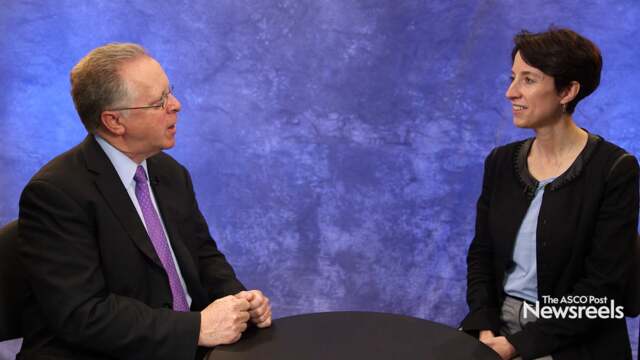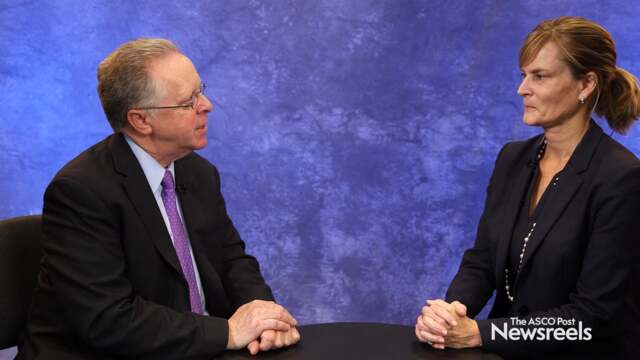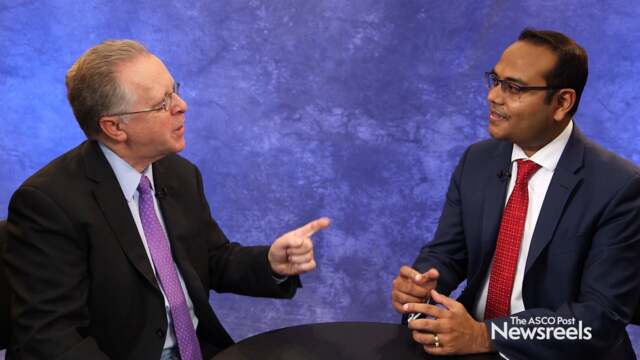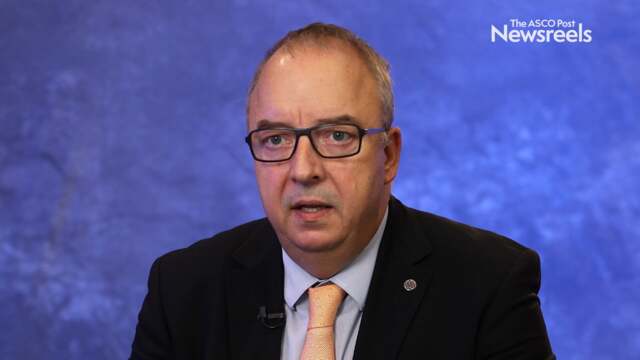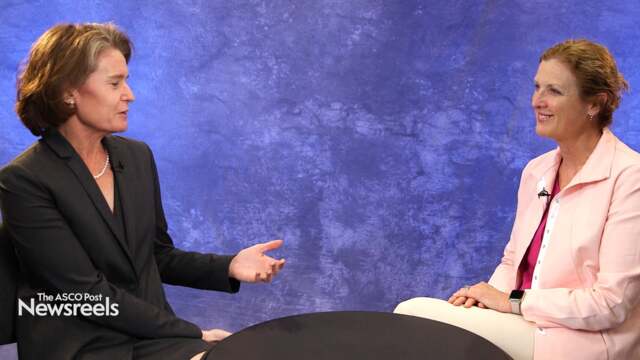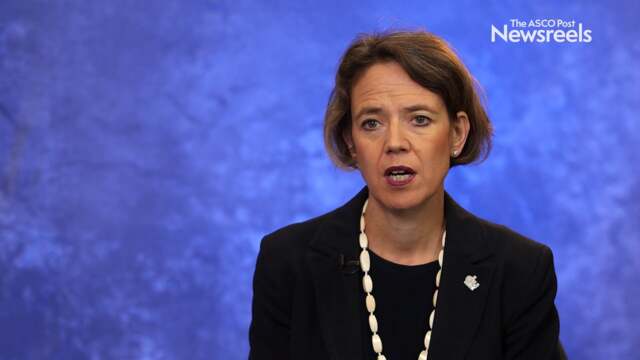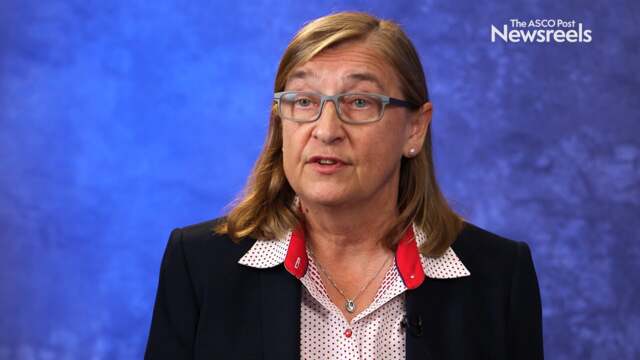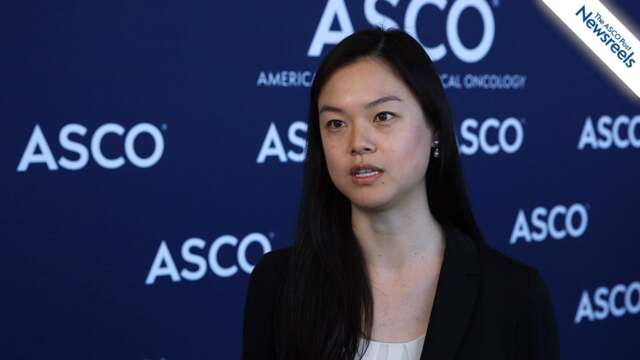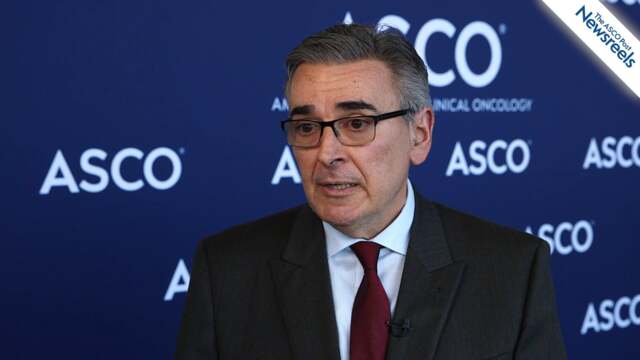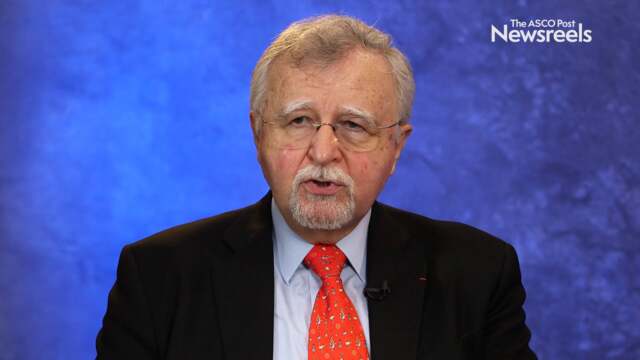Low-Fat Dietary Intervention and Overall Survival After Breast Cancer Diagnosis
In an analysis from the Women’s Health Initiative (WHI) trial reported in JAMA Oncology, Chlebowski et al found that overall survival after the diagnosis of incident breast cancer was improved in women in the reduced-fat dietary intervention group vs control group, reflecting reduced...
FDA and EMA Accept Regulatory Submissions for Review of Talazoparib for Patients With Germline BRCA-Mutated Metastatic Breast Cancer
The U.S. Food and Drug Administration (FDA) recently accepted for filing and granted Priority Review designation a new drug application for talazoparib. The submission is based on results from the EMBRACA trial, which evaluated talazoparib vs chemotherapy in patients with germline BRCA-mutated,...
Study Finds Breast Cancer Survivors Are Not Getting Recommended Number of Mammograms Postsurgery
Breast cancer survivors are not getting the recommended level of screening postsurgery, according to a study by Ruddy et al in JNCCN–Journal of the National Comprehensive Cancer Network. The study was led by Kathryn Ruddy, MD, MPH, Director of Cancer Survivorship for the Department of...
Characteristics and Screening of Brain Metastases in Breast Cancer and NSCLC
In a research letter published in JAMA Oncology, Cagney et al found that brain metastases were more advanced and more likely to be symptomatic in patients with breast cancer compared to patients with non–small cell lung cancer (NSCLC). Current guidelines recommend magnetic resonance imaging...
ASCO Clinical Practice Guideline Focused Update: Selection of Optimal Adjuvant Chemotherapy and Targeted Therapy for Early Breast Cancer
As reported by Neelima Denduluri, MD, of US Oncology Network, Virginia Cancer Specialists, and colleagues in the Journal of Clinical Oncology, ASCO has issued a focused update on the clinical practice guideline on optimal chemotherapy and targeted therapy in early breast cancer. To develop the...
Expert Point of View: Sarah Blair, MD
SARAH BLAIR, MD, a breast surgeon at the University of California San Diego, noted that lymphedema remains a significant clinical problem, although the rates of lymphedema are decreasing, as fewer full axillary node dissections are performed. “This study utilizes bioimpedance spectroscopy, a...
Early Detection and Intervention Reduce Breast Cancer–Related Lymphedema
A NEW STUDY has found that early detection along with a simple intervention can be highly effective in preventing breast cancer–related lymphedema for at-risk women. According to data presented at the 2018 Annual Meeting of the American Society of Breast Surgeons,1 82% of women identified at an...
Expert Point of View: Judy C. Boughey, MD
JUDY C. BOUGHEY, MD, a breast surgeon and clinical and translational researcher at the Mayo Clinic, Rochester, Minnesota, said the two studies highlight the importance of discussing genetic testing with patients who are diagnosed with breast cancer. “With the advances in panel testing for...
Studies Challenge Relevance of Genetic Testing Guidelines for Breast Cancer
NEW RESEARCH suggests that current genetic testing guidelines for breast cancer are far too restrictive, excluding nearly half of high-risk patients. According to a pair of studies presented at the 2018 American Society of Breast Surgeons (ASBrS) Annual Meeting, women with breast cancer who did not ...
Expert Point of View: Carla S. Fisher, MD
CARLA S. FISHER, MD, Associate Professor of Surgery at Indiana University School of Medicine, Indianapolis, underscored the importance of these data in informing treatment decisions given the difficult trade-off patients can face. “By analyzing a large group of patients treated in the modern era, ...
Recurrence Rates After Lumpectomy Significantly Improved in Patients Receiving ‘Modern-Era’ Therapy
A STUDY OF local recurrence rates following lumpectomy has shown significant improvement in patients receiving modern, multimodal therapies, suggesting breast-conserving surgery may be an option for more patients with breast cancer, according to data presented at the 2018 American Society of Breast ...
Expert Point of View: Lisa Carey, MD, and Dawn Hershman, MD, FASCO
LISA CAREY, MD, the Richardson and Marilyn Jacobs Preyer Distinguished Professor in Breast Cancer Research at the University of North Carolina, Chapel Hill, commented as the invited discussant for TAILORx, and Dawn L. Hershman, MD, FASCO, Professor of Medicine and Epidemiology and Leader of the...
TAILORx: Endocrine Therapy Alone Is Sufficient for Most Patients With ‘Intermediate-Risk’ Breast Cancer
THE HIGHLY ANTICIPATED results of the phase III TAILORx study are in—and they indicate that the vast majority of patients with “intermediate-risk” early-stage breast cancer can forgo chemotherapy. “Our study shows that chemotherapy may be avoided in about 70% of women with hormone...
The X-Ray Era: 1901–1915
The text and photographs on this page are excerpted from a four-volume series of books titled Oncology: Tumors & Treatment, A Photographic History, by Stanley B. Burns, MD, FACS, and Elizabeth A. Burns. The photos below are from the volume titled “The X-Ray Era: 1901–1915.” The photographs...
Tai Chi for the Treatment of Insomnia in Breast Cancer Survivors
Underrecognized and inadequately managed, insomnia is a significant burden for many cancer survivors. Often persistent over several years following diagnosis and treatment, sleep problems negatively affect quality of life and elevate the risk of depression and anxiety. In this installment of The...
Andrew D. Seidman, MD, and Meredith M. Regan, ScD, on Breast Cancer: Results From the TEXT and SOFT Trials
Andrew D. Seidman, MD, of Memorial Sloan Kettering Cancer Center, and Meredith M. Regan, ScD, of Dana-Farber Cancer Institute, discuss study findings on absolute improvements in freedom from distant recurrence with adjuvant endocrine therapies for premenopausal women with hormone receptor–positive, HER2-negative breast cancer (Abstract 503).
Andrew D. Seidman, MD, and Susan F. Dent, MD, on Breast Cancer: Analysis of the SANDPIPER Trial
Andrew D. Seidman, MD, of Memorial Sloan Kettering Cancer Center, and Susan F. Dent, MD, of The Ottawa Hospital Cancer Centre, analyze the phase III study findings on taselisib plus fulvestrant vs fulvestrant in patients with estrogen receptor–positive, PIK3CA-mutant, locally advanced or metastatic breast cancer (Abstract LBA1006).
Andrew D. Seidman, MD, and Aditya Bardia, MD, MPH, on Metastatic Breast Cancer: Findings on an Antibody-Drug Conjugate
Andrew D. Seidman, MD, of Memorial Sloan Kettering Cancer Center, and Aditya Bardia, MD, MPH, of Massachusetts General Hospital, discuss the efficacy of sacituzumab govitecan for treatment-refractory hormone receptor–positive/HER2-negative metastatic breast cancer (Abstract 1004).
Michael Gnant, MD, on Breast Cancer: Results From the ABCSG-18 Trial
Michael Gnant, MD, of the Medical University of Vienna, discusses study findings on adjuvant denosumab in early breast cancer––a disease-free survival analysis of postmenopausal patients.
2018 ASCO: Neoadjuvant Use of PARP Inhibitor Shows Promise in Early-Stage, BRCA-Mutated Breast Cancer
In a small phase II study of early-stage breast cancer patients with BRCA1/2 mutations, researchers at The University of Texas MD Anderson Cancer Center found that more than half of the women who took the PARP inhibitor talazoparib once daily prior to surgery had no evidence of disease at the time...
2018 ASCO: Aromatase Inhibitor Plus Ovarian Suppression Yields Benefit in High-Risk Premenopausal Patients With Breast Cancer
Premenopausal women with hormone receptor (HR)–positive, HER2-negative breast cancer and a high risk of recurrence who are treated with an aromatase inhibitor plus ovarian function suppression may gain a 10% to 15% improvement in freedom from distant recurrence at 8 years, according to a ...
Elizabeth A. Mittendorf, MD, PhD, and Lisa A. Carey, MD, on Breast Cancer: Commentary on the TAILORx Trial
Elizabeth A. Mittendorf, MD, PhD, of Dana-Farber/Brigham and Women’s Cancer Center, and Lisa A. Carey, MD, of the University of North Carolina, discuss the impact of new phase III findings on chemoendocrine treatment vs endocrine treatment alone in hormone receptor–positive, HER2-negative, node-negative breast cancer (Abstract LBA1).
Sibylle Loibl, MD, PhD, on Triple-Negative Breast Cancer: Results From the GeparNuevo Trial
Sibylle Loibl, MD, PhD, of the German Breast Group, discusses phase II study findings on the addition of durvalumab to a taxane-anthracycline–containing chemotherapy in triple-negative breast cancer (Abstract 104).
Rebecca A. Dent, MD, on Triple-Negative Breast Cancer: Results From the LOTUS Trial
Rebecca A. Dent, MD, of the National Cancer Centre Singapore, discusses phase II study findings on first-line ipatasertib plus paclitaxel for locally advanced/metastatic triple-negative breast cancer (Abstract 1008).
Helena Margaret Earl, MBBS, PhD, on Early Breast Cancer: Results From the Persephone Trial
Helena Margaret Earl, MBBS, PhD, of the University of Cambridge, discusses phase III study findings on 6 vs 12 months of adjuvant trastuzumab in patients with HER2-positive early breast cancer (Abstract 506).
Sherry Shen, MD, on Breast Cancer and Obesity: Results of the SWOG S0927 Study
Sherry Shen, MD, of Columbia University Medical Center, discusses findings on the use of omega-3 fatty acid for obese breast cancer patients with aromatase inhibitor–related arthralgia (Abstract 10000).
Peter Schmid, MD, PhD, on Triple-Negative Breast Cancer: Results From the PAKT Trial
Peter Schmid, MD, PhD, of Queen Mary University of London, discusses phase II study findings on AZD5363 plus paclitaxel vs placebo plus paclitaxel as first-line therapy for metastatic triple-negative breast cancer (Abstract 1007).
Joseph A. Sparano, MD, on Breast Cancer: Results of the TAILORx Trial
Joseph A. Sparano, MD, of Montefiore Medical Center, discusses phase III study results on chemoendocrine treatment vs endocrine treatment alone in hormone receptor–positive, HER2-negative, node-negative breast cancer and an intermediate prognosis 21-gene recurrence score (Abstract LBA1).
2018 ASCO: TAILORx: Most Women With Early-Stage Breast Cancer Can Forgo Chemotherapy When Guided by a Diagnostic Test
The federally funded, phase III TAILORx clinical trial showed that most women with hormone receptor (HR)–positive, HER2-negative, axillary node–negative early-stage breast cancer and a mid-range score on a 21-tumor gene expression assay (Oncotype DX® Breast Recurrence Score) do not...
Gabriel N. Hortobagyi, MD, on Breast Cancer Staging: New and Important Changes
Gabriel N. Hortobagyi, MD, of The University of Texas MD Anderson Cancer Center, discusses the 8th edition of the TNM staging system, which includes prognostic stage groups based on clinical and pathologic factors combined with grade and hormone and HER2 status.
2018 ASCO: Phase III SANDPIPER Trial Evaluates Taselisib Plus Fulvestrant in Advanced Breast Cancer
In a phase III clinical trial, the investigational PI3K inhibitor taselisib combined with standard hormone therapy fulvestrant (Faslodex) halted the growth of advanced breast cancer growth by 2 months longer than hormone therapy alone. In addition, the novel combination decreased the chance of...
Multiple-Gene Sequencing vs BRCA1/2-Only Testing After Breast Cancer Diagnosis
In a retrospective cohort study reported in JAMA Oncology, Kurian et al found that use of germline multiple-gene sequencing has become more common than BRCA1/2-only sequencing after breast cancer diagnosis in clinical practice, with an associated increased detection of pathologic variants not...
Education Came First for Breast Cancer Expert Beverly Moy, MD, MPH, Daughter of Chinese Immigrants
Beverly Moy, MD, MPH, grew up in Brooklyn, New York, in a modest working-class home. Both her parents were immigrants from China. “Education is highly prized in Chinese culture, and my home life was no exception. I didn’t speak any English when I began kindergarten, so that was a bit challenging,...
Tumor-Infiltrating Lymphocytes and Prognosis in Breast Cancer Subtypes
In a study reported in The Lancet Oncology by Denkert and colleagues, increased levels of tumor-infiltrating lymphocytes (TILs) in women receiving neoadjuvant chemotherapy were associated with improved prognosis in HER2-positive and triple-negative breast cancers but poorer outcome in luminal...
Hormonal Contraception and Breast Cancer Risk
As reported in The New England Journal of Medicine by Lina S. Mørch, PhD, of the University of Copenhagen, and colleagues, a Danish study has shown that the risk of breast cancer is increased in hormonal contraception users vs nonusers, with the absolute increase in risk being small. The study...
Circulating Tumor Cells and Benefit of Adjuvant Radiotherapy in Early Breast Cancer
In a study reported in JAMA Oncology, Goodman et al found that adjuvant radiotherapy was associated with better outcome in patients with early breast cancer who had detectable circulating tumor cells (CTCs). Study Details The analysis included data from patients with stage pT1 to pT2 and pN0 to...
NCCN Clinical Practice Guidelines in Oncology (NCCN Guidelines®): 2018 Guidelines Updates
In 1996, the National Comprehensive Cancer Network® (NCCN®) published its first set of Clinical Practice Guidelines in Oncology (NCCN Guidelines®) covering 8 tumor types. Guidelines are now published for more than 60 tumor types and topics. Some of the key updates were presented at NCCN’s 23rd...
Endocrine Therapy: An Important Treatment Limited by Major Challenges
“Endocrine therapy remains the most effective and least toxic treatment for breast cancer, but we have many problems to solve. And there will have to be many different solutions,” according to George W. Sledge, MD, FASCO, Professor of Medicine and Chief of the Division of Oncology at Stanford...
For Adjuvant Trastuzumab, 6 Months Is Noninferior to 12 Months
The noninferiority phase III Persephone trial could shake up the standard of care for adjuvant trastuzumab (Herceptin), showing that patients with early-stage HER2-positive breast cancer derived as much benefit from 6 months of trastuzumab as 12 months, according to research from the United Kingdom ...
Effect of GnRHa Treatment During Chemotherapy on Preservation of Ovarian Function and Fertility in Premenopausal Patients With Early Breast Cancer
A meta-analysis of patient-level data reported by Lambertini et al in the Journal of Clinical Oncology indicated that temporary ovarian suppression with gonadotropin-releasing hormone agonists (GnRHa) during chemotherapy was effective in preserving ovarian function and fertility in premenopausal...
Risk of Interval Invasive Second Breast Cancers
In a study reported in the Journal of Clinical Oncology, Lee et al determined risk levels for interval invasive second breast cancers after negative surveillance mammography and identified factors associated with higher risk. Study Details The study involved 65,084 surveillance mammograms...
Risk of Breast Cancer After Negative Screening Mammography
In a study reported in JAMA Oncology, McCarthy et al identified the risk of interval breast cancer after negative screening mammography, including risk of poor-prognosis breast cancer. Study Details The study involved mammography data from the Population-Based Research Optimizing Screening...
CXCR4 Antagonist Plus Eribulin in HER2-Negative Metastatic Breast Cancer
Findings in a phase I trial reported in The Lancet Oncology by Pernas et al indicate activity of the combination of the CXCR4 chemokine receptor antagonist balixafortide plus eribulin in previously treated HER2-negative metastatic breast cancer. The CXCR4–stromal cell-derived factor-1α...
2018 ASCO: Shortening Adjuvant Trastuzumab to 6 Months in Patients With HER2-Positive Early Breast Cancer Is Effective and Reduces Cardiac Toxicities
Persephone, a large phase III randomized noninferiority study conducted in the United Kingdom comparing 6 months to 12 months of trastuzumab (Herceptin) in patients with HER2-positive early breast cancer has found 6 months of trastuzumab to be noninferior to 12 months of the therapy. In addition,...
Sarcopenia, Adiposity, and Survival in Women With Nonmetastatic Breast Cancer
In a study reported in JAMA Oncology, Caan et al found that computed tomography (CT)-derived sarcopenia and adiposity were associated with overall survival in women with nonmetastatic breast cancer. Study Details The study involved data from 3,241 women from Kaiser Permanente of Northern...
Hormone Replacement Therapy and Breast Cancer Risk After Oophorectomy in BRCA1-Mutation Carriers
In a study reported in JAMA Oncology, Kotsopoulos et al found that use of hormone replacement therapy overall did not increase risk of breast cancer among BRCA1-mutation carriers after prophylactic bilateral salpingo-oophorectomy; however, use of estrogen-progesterone hormone replacement...
Can Some Patients With Early Breast Cancer Avoid Surgery?
RESEARCHERS AT The University of Texas MD Anderson Cancer Center are testing the possibility of safely eliminating surgery in patients with breast cancer who are “exceptional responders” to neoadjuvant therapy, according to Henry M. Kuerer, MD, PhD, a breast cancer surgeon who described this...
Predictive Model for Breast Cancer in Women With Atypical Hyperplasia
As reported in the Journal of Clinical Oncology, Degnim et al have developed a model for predicting breast cancer risk among women with atypical hyperplasia on breast biopsy. Study Details The risk model (AH-BC) was developed using retrospective cohorts of women aged 18 to 85 years with...
ASBrS 2018: Early Detection and Intervention Effective for Preventing Breast Cancer–Related Lymphedema
Early, ongoing screening of lymphatic function and immediate patient-administered therapies as needed are highly effective in improving outcomes for women at high risk for breast cancer–related lymphedema (BCRL). These were the findings of a new study presented at the American Society of ...
ASBrS 2018: Modern Therapies Minimize Recurrence After Breast-Conserving Surgery
Modern, multimodality lumpectomy treatment significantly reduces the incidence of breast cancer recurrence at the original tumor site compared to historical protocols, according to a new study presented at the American Society of Breast Surgeons (ASBrS) 19th Annual Meeting (Abstract...
